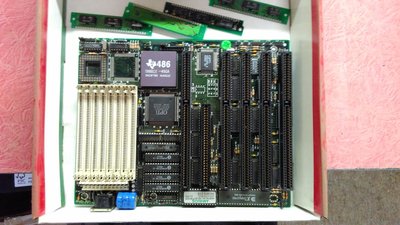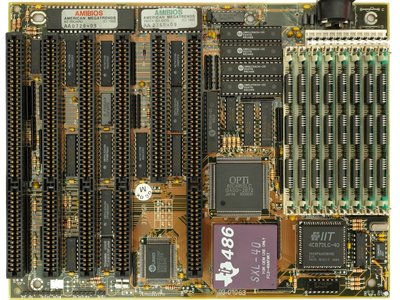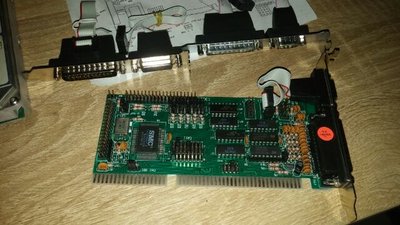You don't necessarily require non PnP cards to function on a 386 motherboard (which is what the Ti 486DLC CPU plugs onto).
However, I don't recall of any 16-bit IDE controllers or 16-bit ISA Graphics cards that are PnP. Only 16-bit sound cards later on became PnP (from around 1995 onwards).
On my first PC (which just happened to be a Cyrix 486DLC 40 MHz - essentially the same CPU you have) I started out with a non PnP Aztech Sound Galaxy sound card, but later on upgraded to a Sound Blaster AWE64, which worked quite happily on that motherboard under pure DOS (although, I wasn't able to use the Waveguide synthesis in Windows due to its requirement of at least a Pentium 90 MHz).
In order for a PnP card to function in a non PnP environment (like DOS), you require a PnP configuration manager (there is Intel's ICU or Creative's CTCM & CTCU), but most sound card manufacturers (that had PnP sound cards) bundled the necessary utilities with their sound card software.
If your intention is to only play games from that era (which on a Cyrix/Ti 486DLC would probably be up to around early 1994), then you do not require a FPU, since no games from that era (there might be one or two examples) utilised the FPU. Back in the 80's & early to mid 90's only CAD programs and some business applications utilised the FPU to speed up mathematical calculations.
If you do want to pair an FPU with your CPU (which I did with my original PC from the start) then the Cyrix FasMath Cx87DLC-40QP is the one you're looking for (note that the clock frequency of the math co-processor should ideally match the clock frequency of the CPU, which in your case is 40 MHz). Cyrix also made FPU's for the 386 line of CPU's, but I'm not sure whether the Cyrix FasMath CX-83D87-40-GP (which was the FPU released for 386 CPU's) will work with a 486DLC. I have been able to pair my Cyrix FasMath Cx87DLC-40QP with an AMD 386DX 40 MHz without any problems.
This should be your motherboard: https://th99.bl4ckb0x.de/m/A-B/32657.htm
Quite a resourceful site for finding schematics and jumper settings for an array of old hardware (https://th99.bl4ckb0x.de/)
I would, however, remove the battery immediately when you receive it (even if it still appears to be working), to avoid it leaking out.
Rather buy an external battery holder.
The best way to remove it (I've had great success with this) is to just use a de-soldering tool with a vacuum pump (they cost around $10).
My Cyrix 486DLC 40 MHz CPU runs quite hot (so hot that when even idle, I cannot keep my finger on it). In comparison, an Intel 486DX 33 MHz (which runs more or less on par with this CPU) runs very cool.
Although not officially released with any heatsinks or fans, I would recommend either just placing a small fan close enough that blows over the CPU or try to mount a small heatsink on top of the CPU (if you can manage to secure the heatsink to the CPU and is still able to fit it into the socket).
I would not recommend trying to overclock this CPU. In order to do so, you will have to replace the crystal (something I've never tried and have no desire to do so), since the motherboard would not have any jumpers allowing you to overclock the Front Side Bus.
If you want more speed, then rather go for a proper 486 solution (like a 486DX2 66 MHz).






